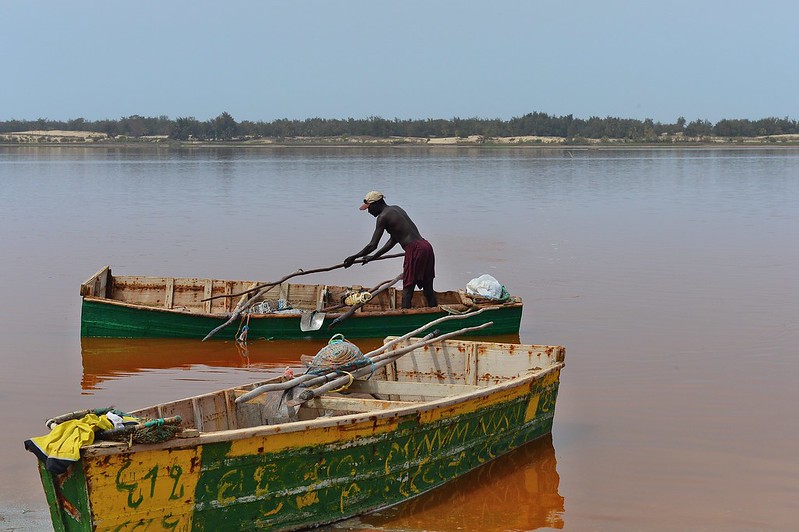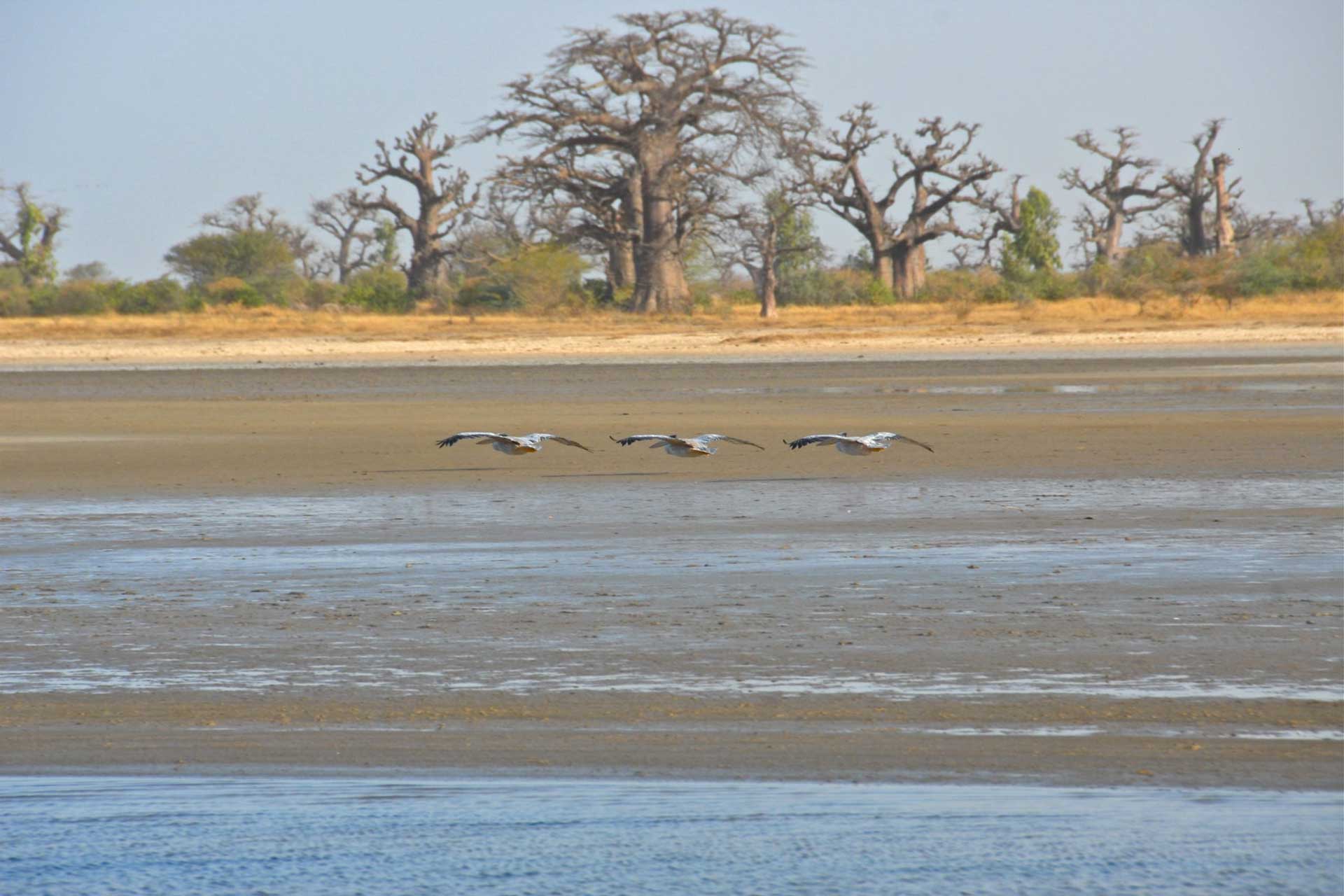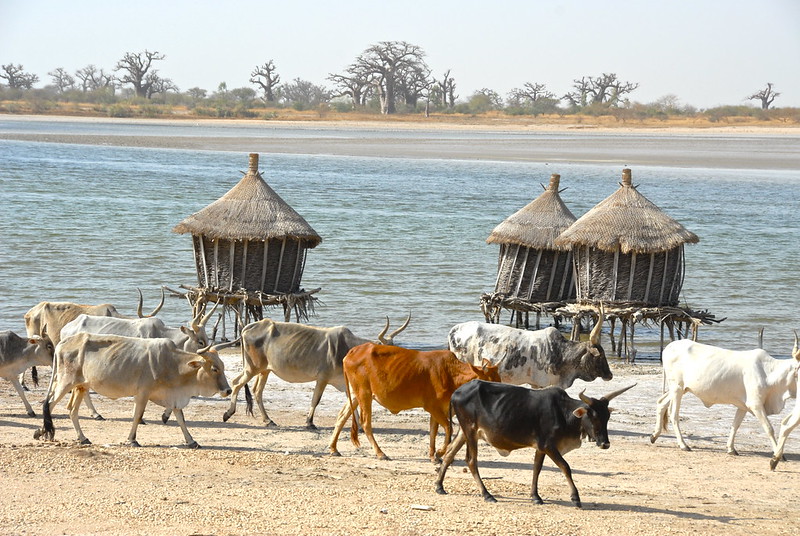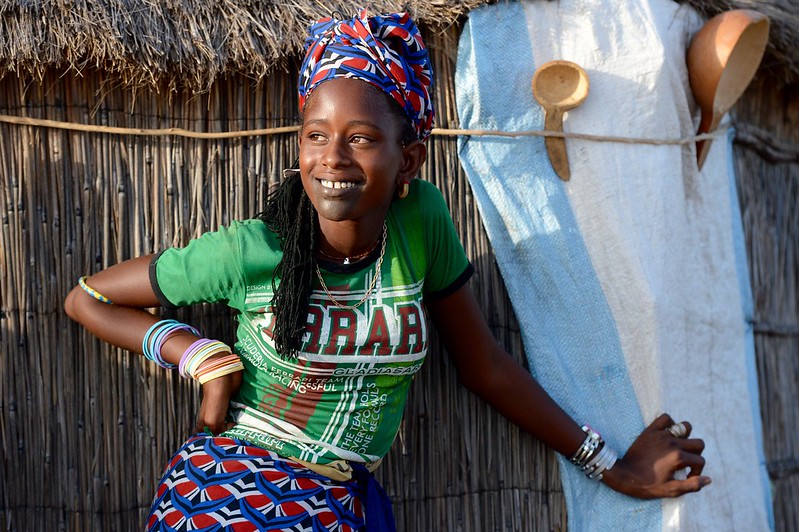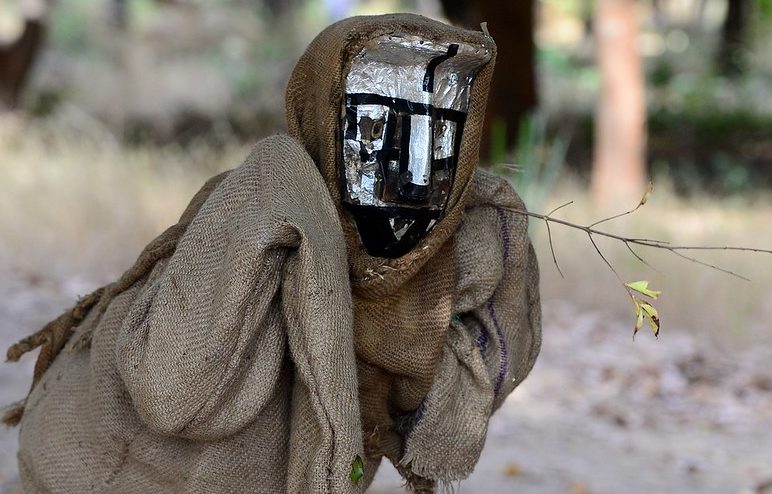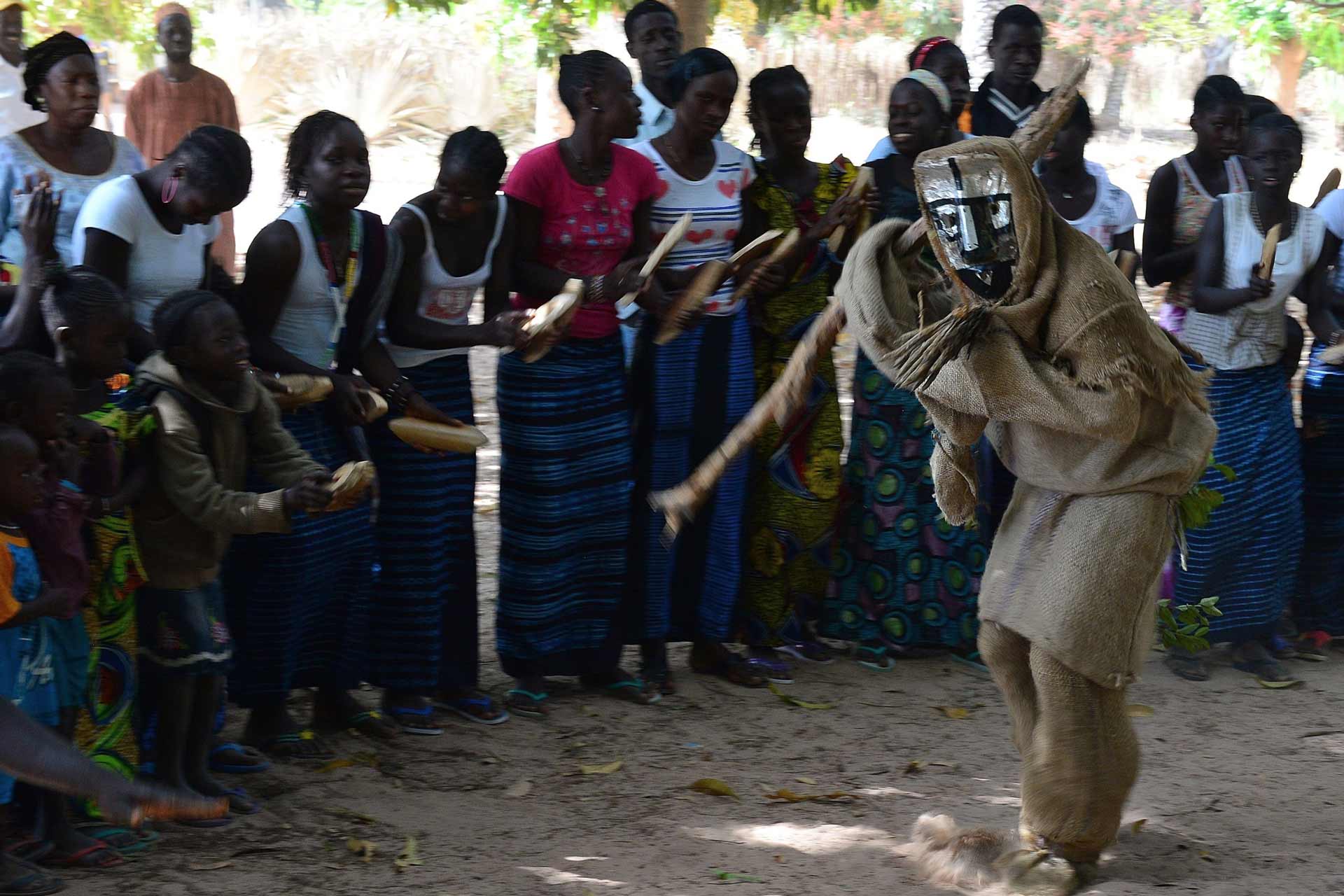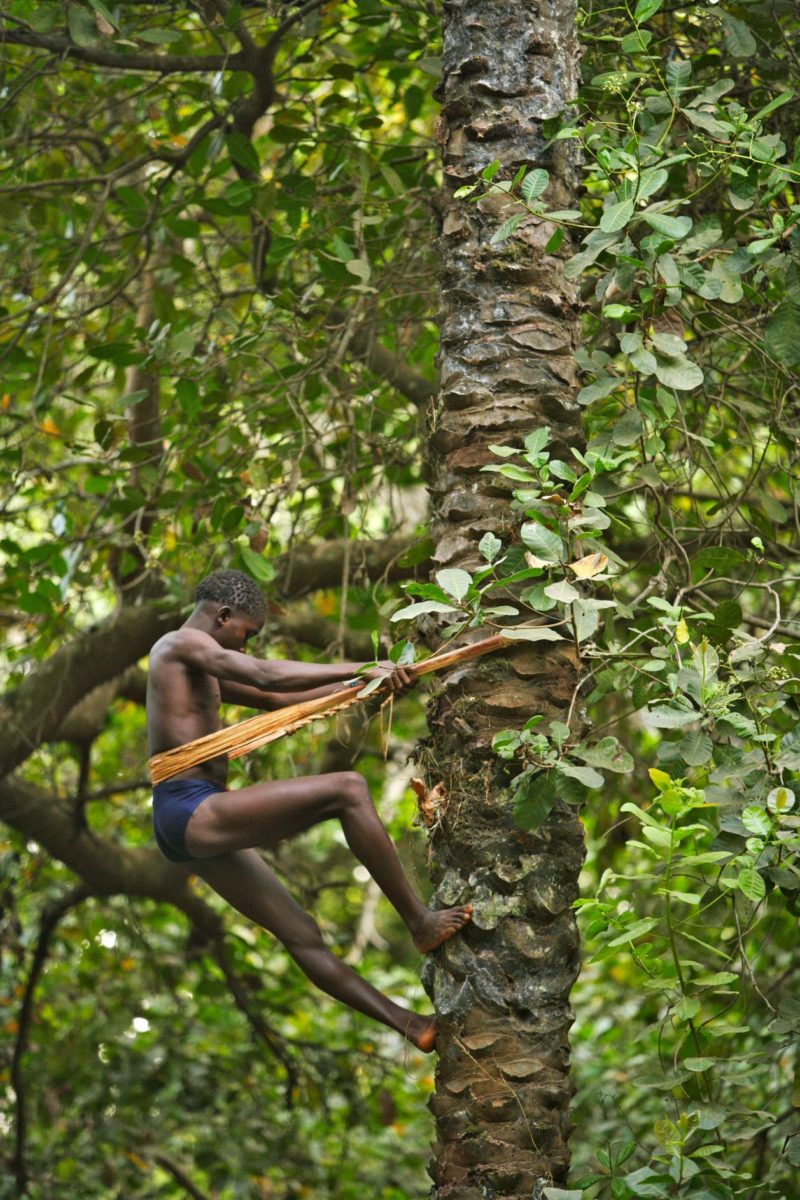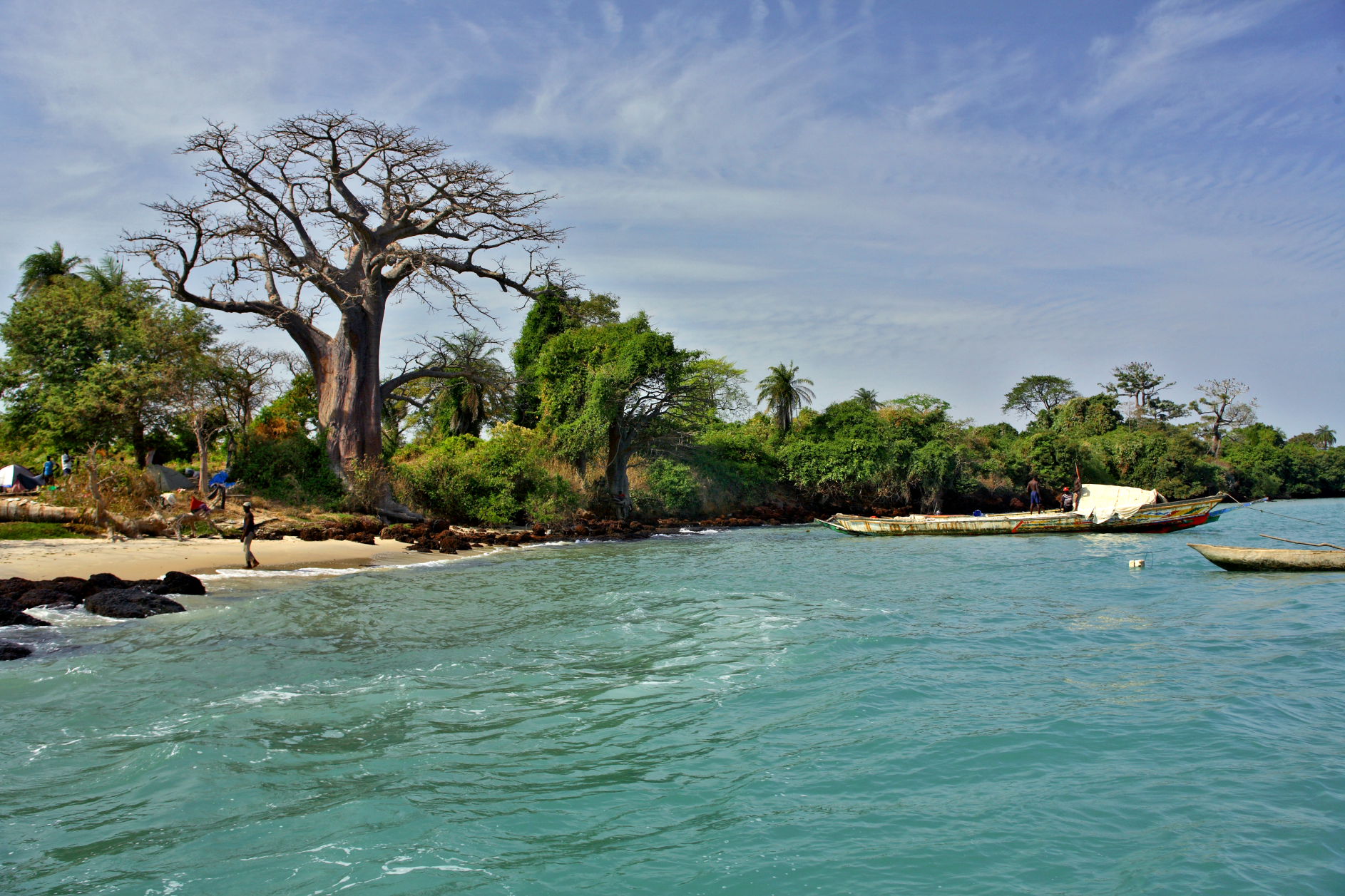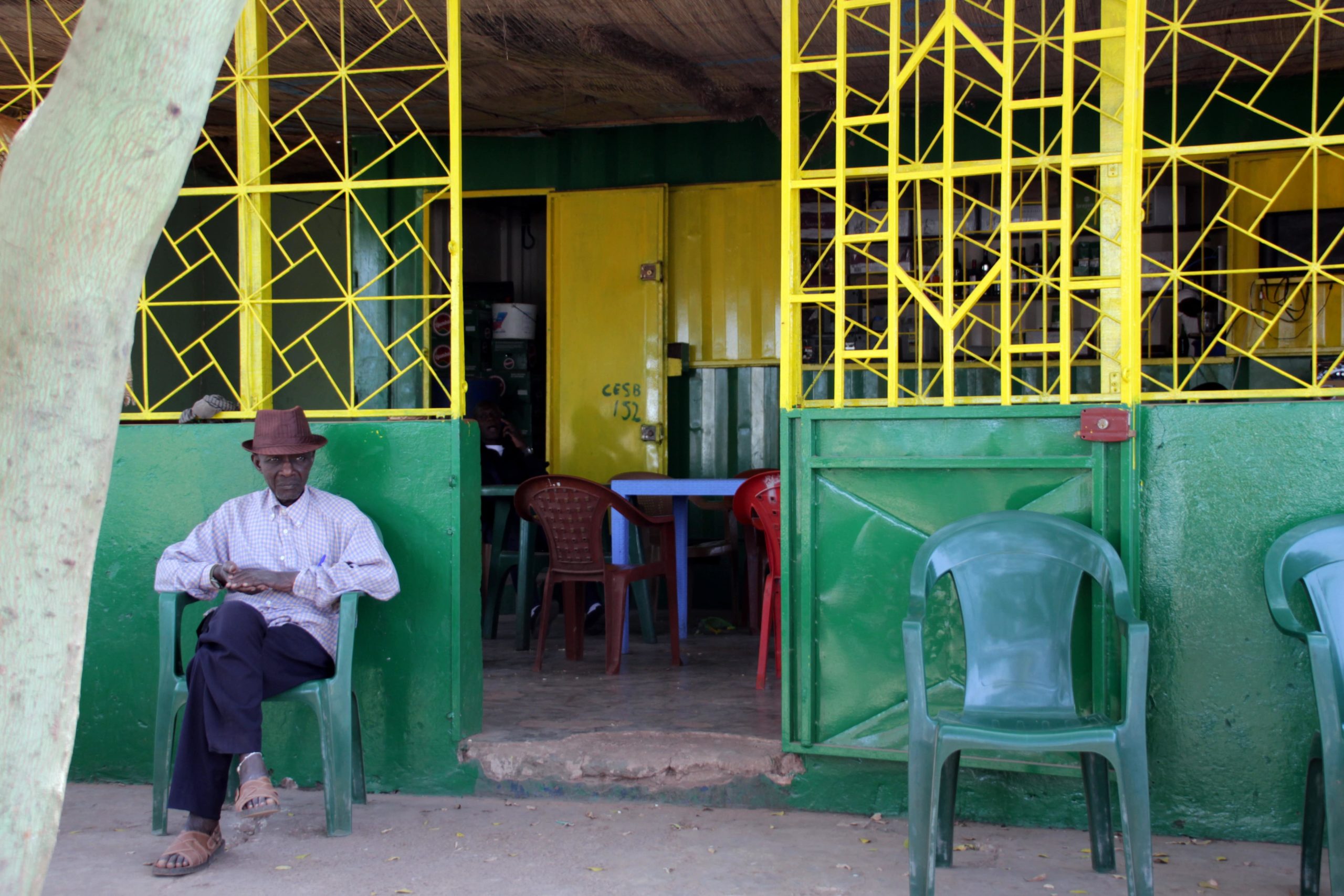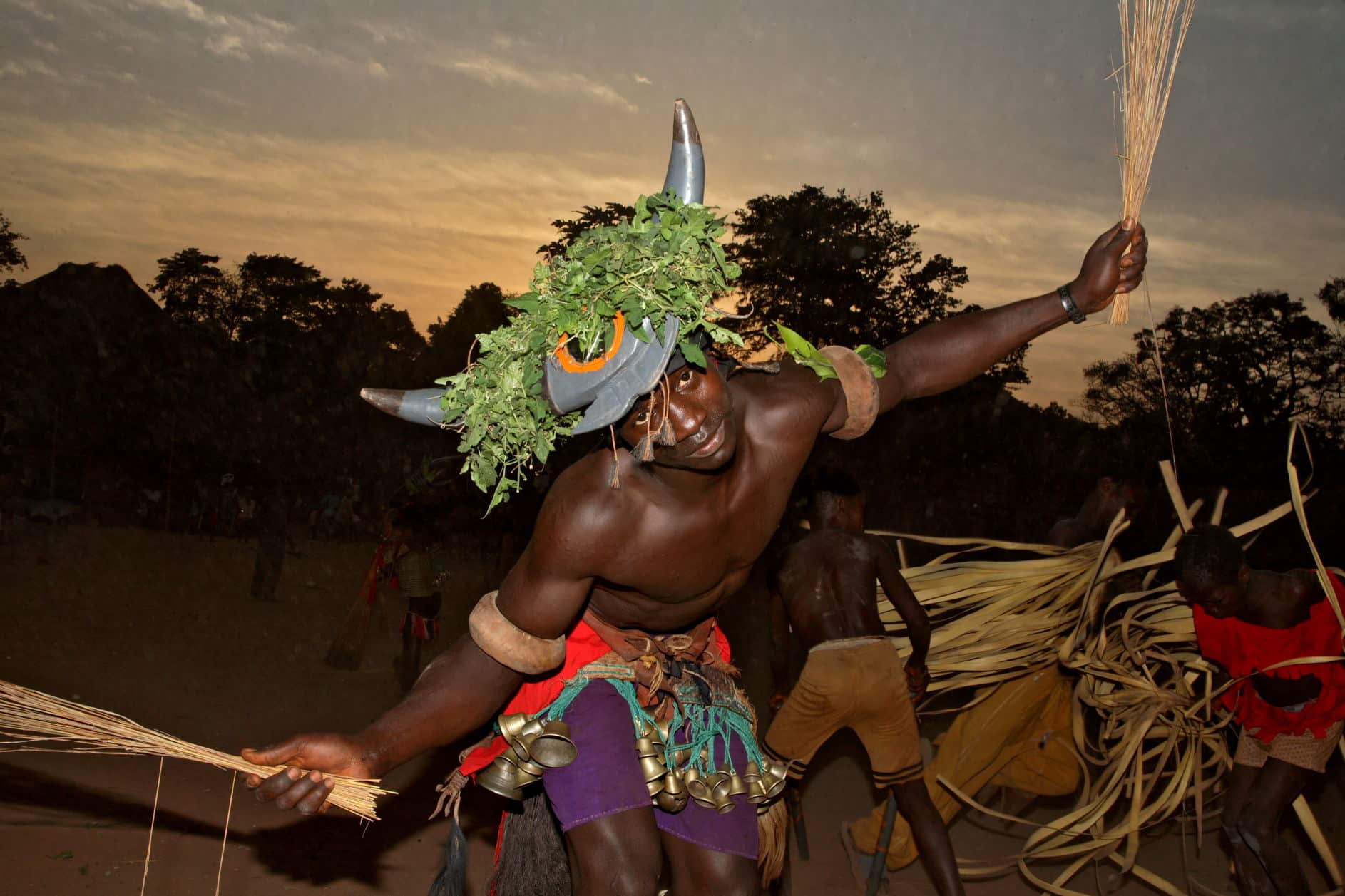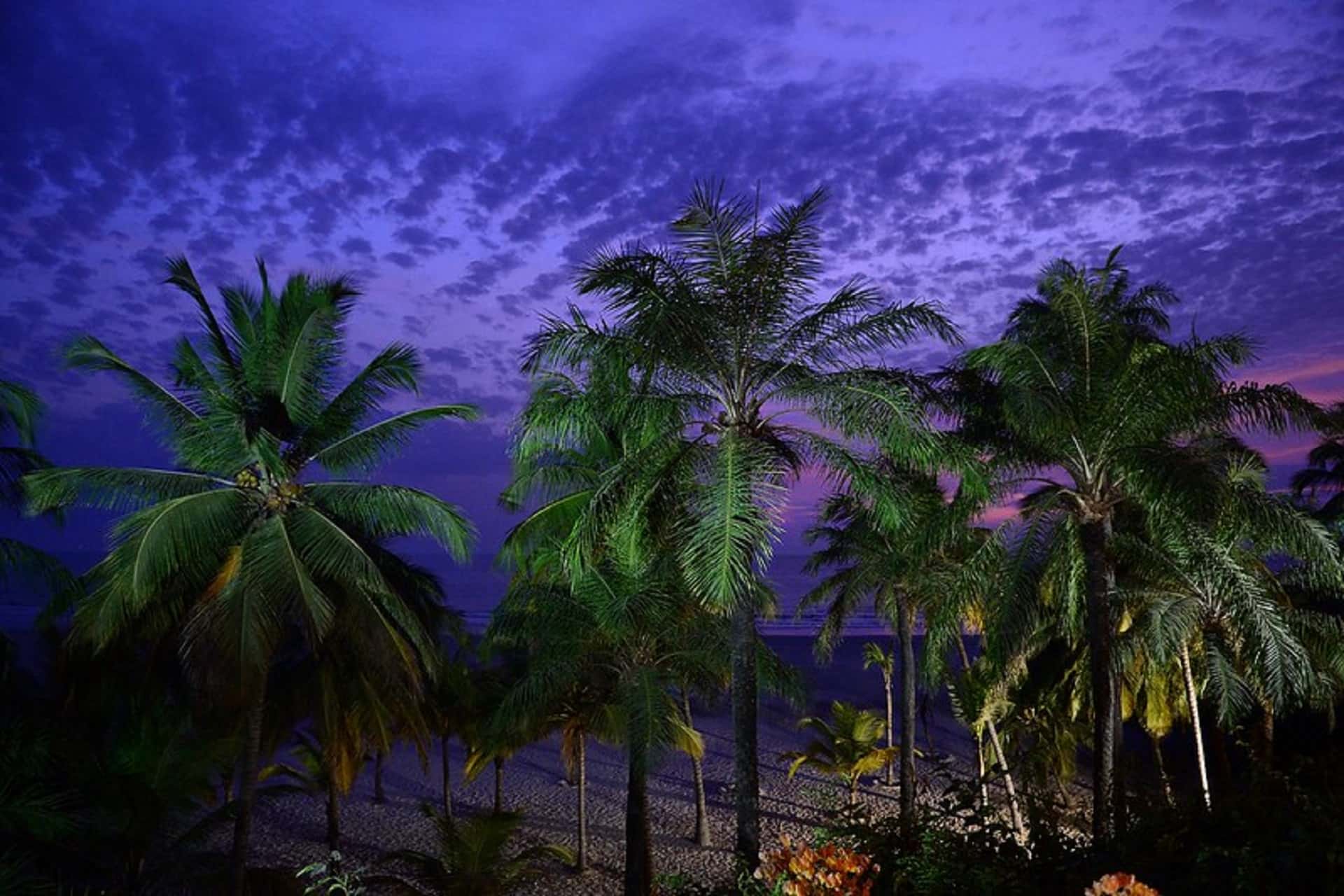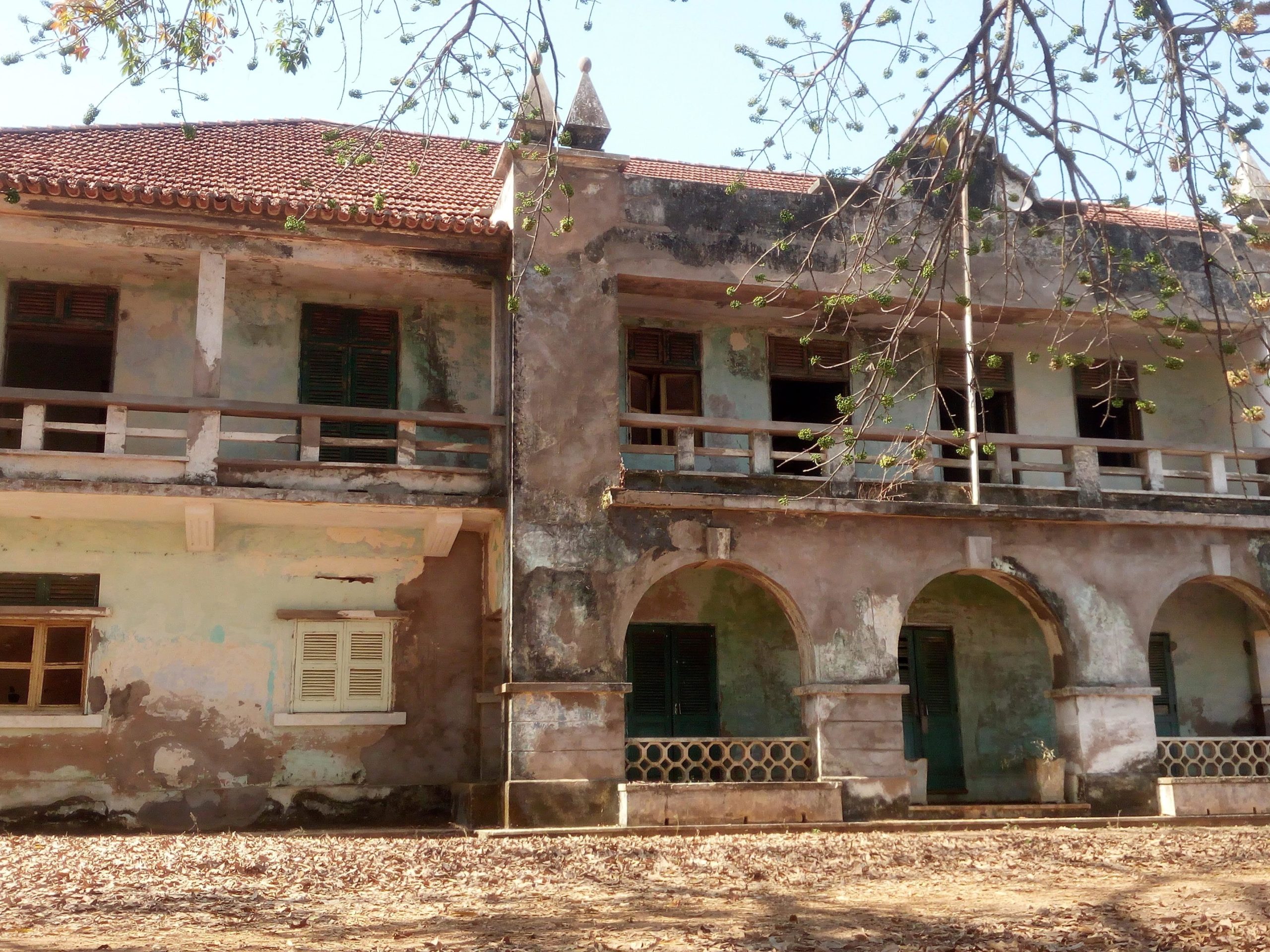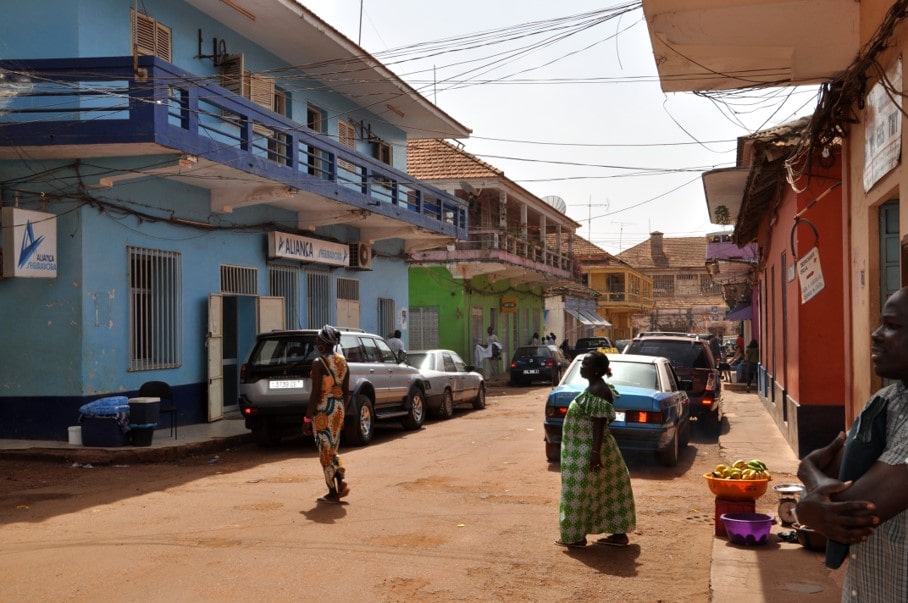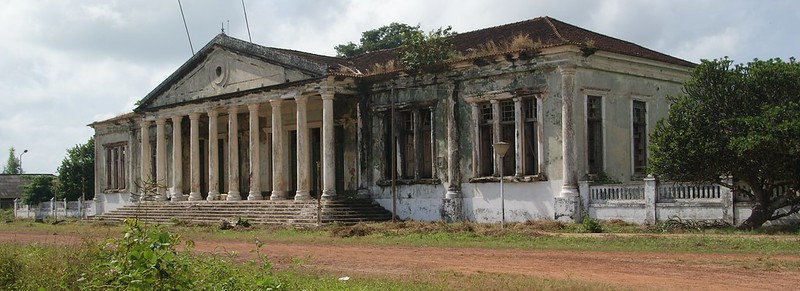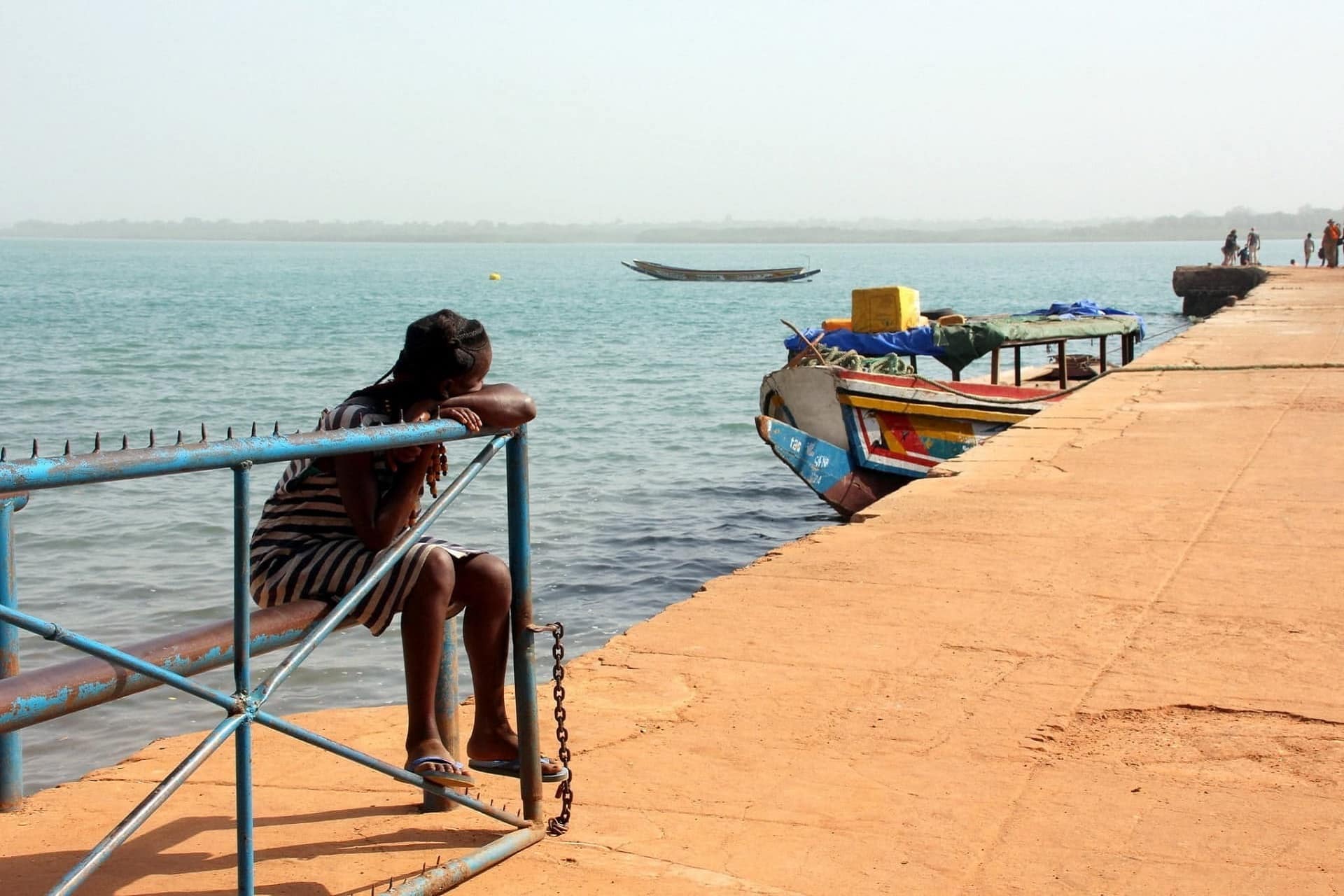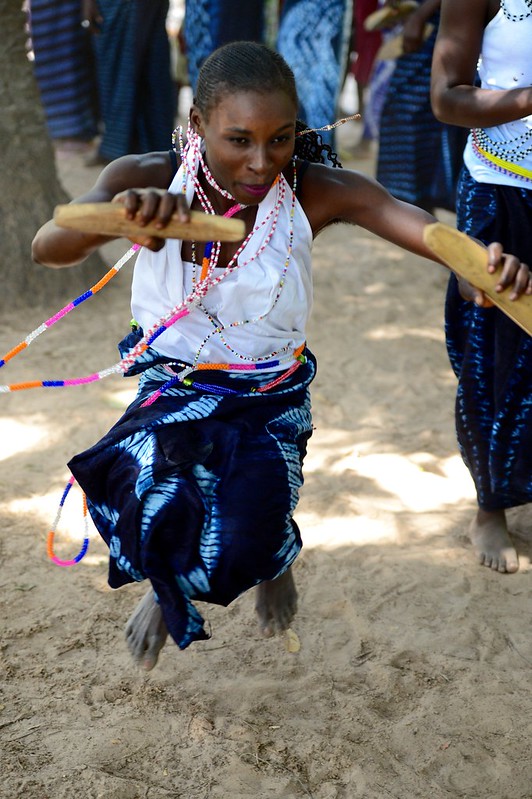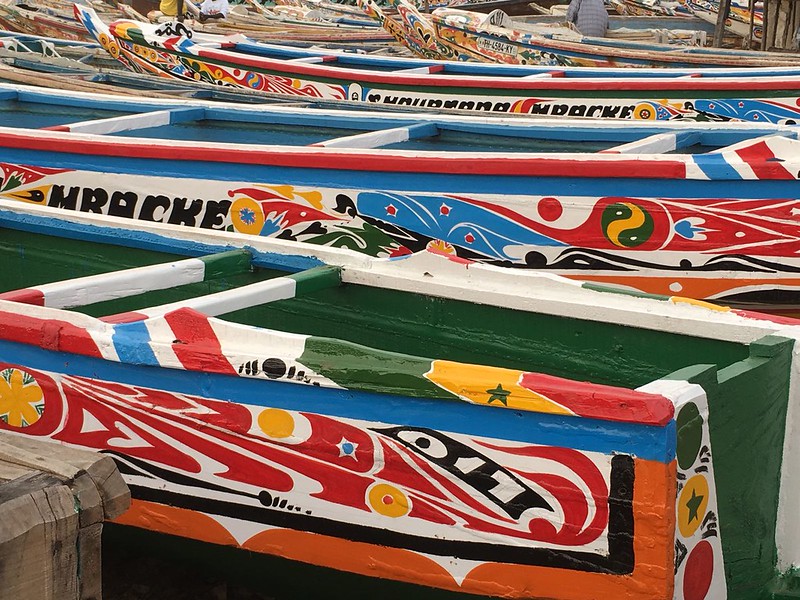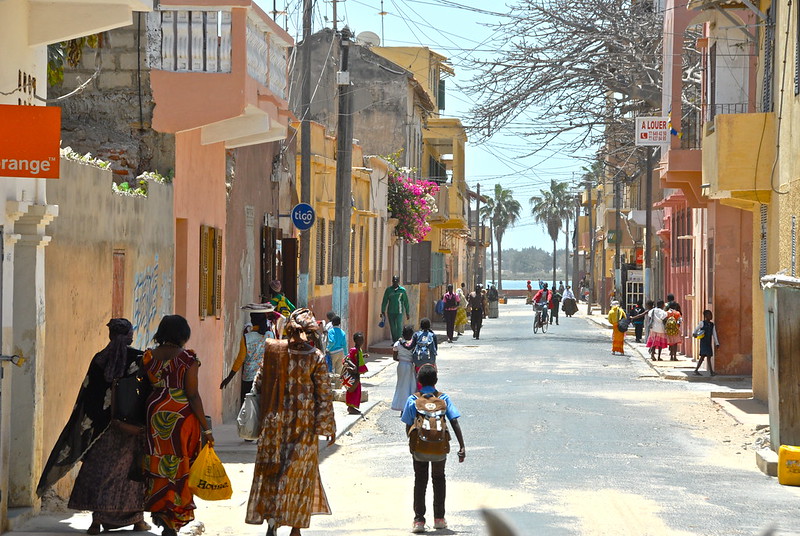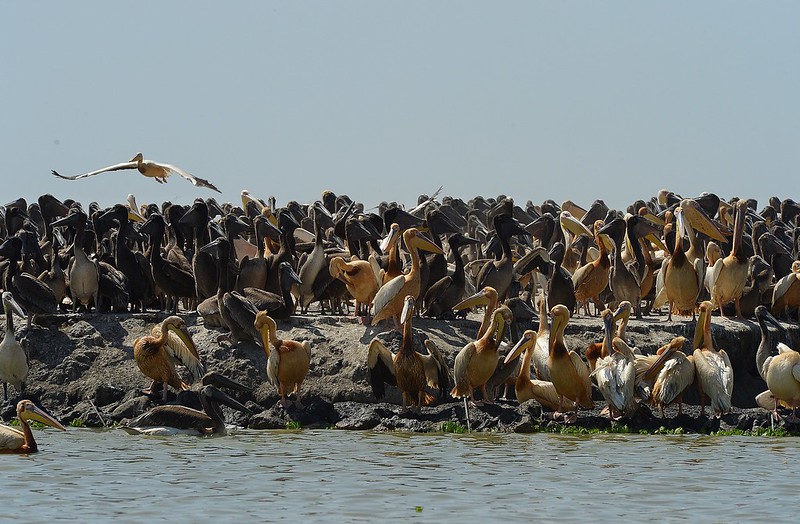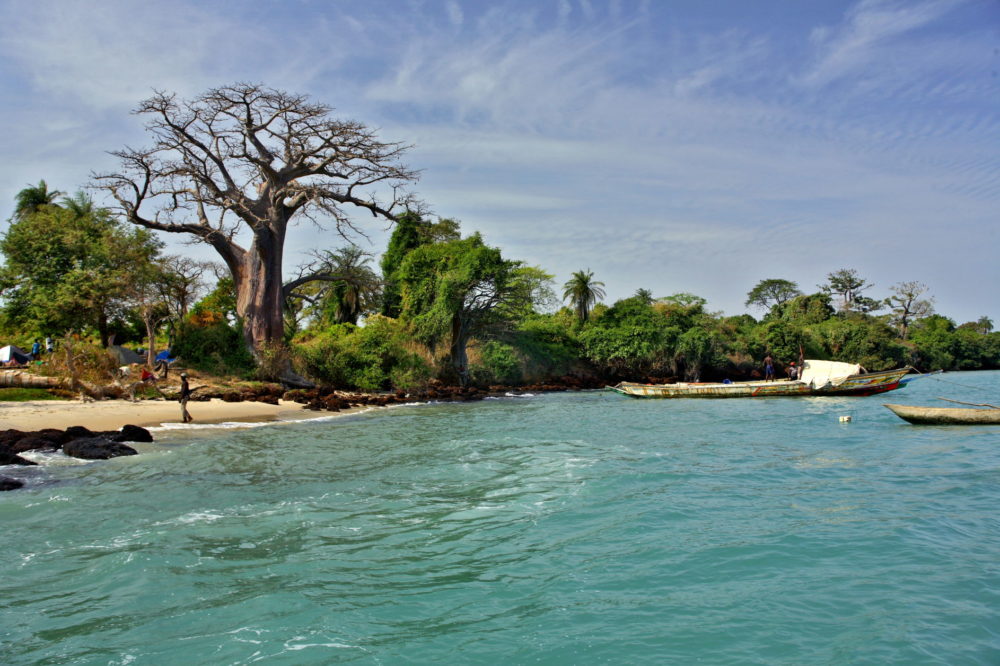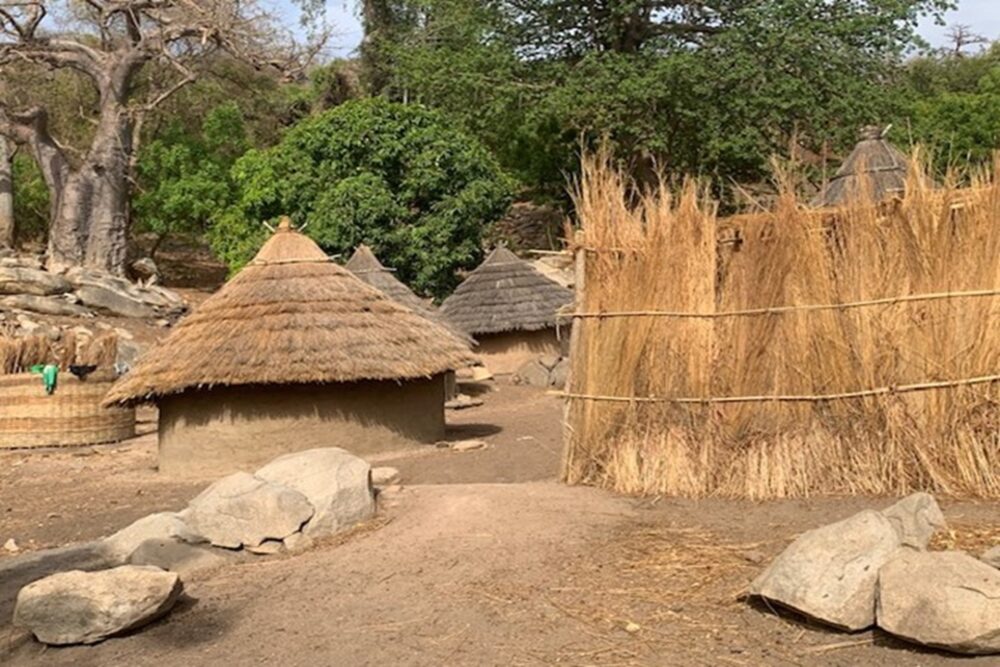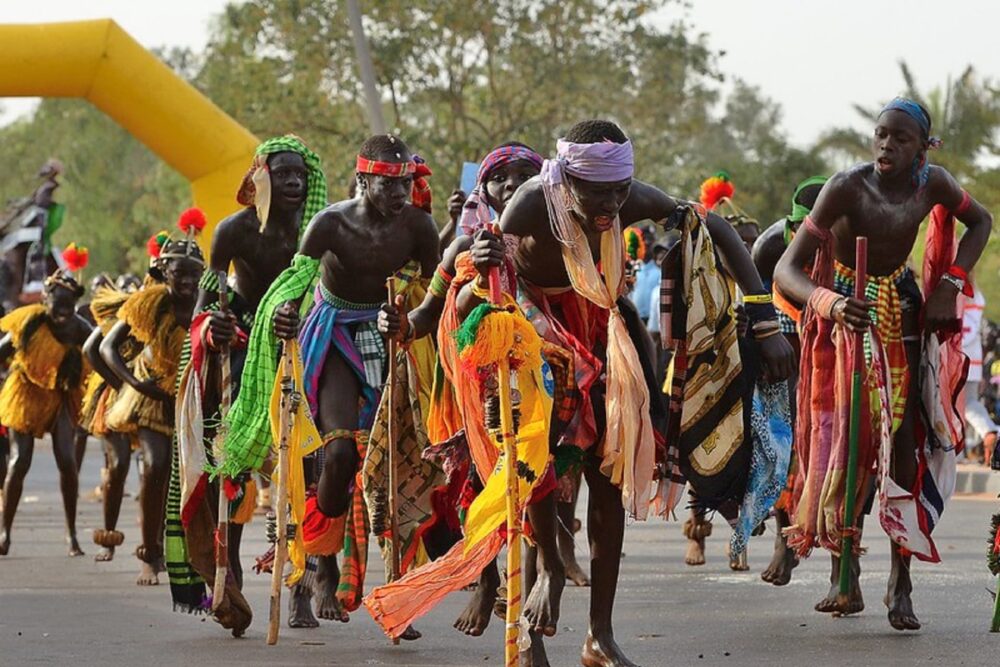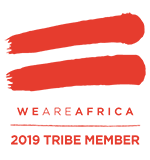Description
SENEGAL, THE GAMBIA & GUINEA BISSAU
A unique itinerary crossing three countries from “north to south” to experience a continuous change of climatic ecosystems and human environments.
NATURE
Following the “uncertain border” between land and water, we move across an incredible variety of natural environments such as savannah, estuaries, forests, and mangrove swamps, ending with an exciting ocean navigation to discover and enjoy the Bijagos Archipelago. Birds will be a constant presence throughout the whole journey. Djoudj National Sanctuary in Senegal is one of the main migratory bird sanctuaries on earth and Gambia is a well-known birding destination.
HISTORY, PREHISTORY & TIMELESS VILLAGES
We will discover historical sites as:
Dakar, a contemporary metropolis, large capital, and an African intellectual center since the time before the independence.
Gorée, an ancient slave-trade island;
Saint Louis, the first colonial capital of “French West Africa”;
Bolama Island, the Portuguese Guinea capital, forgotten on a remote island;
We will experience the encounter with “timeless” people as herders and remote villages. We will discover the largest monoliths site on Earth.
ART, CULTURE & MUSIC
In the northern savannah, we will be invited to the camp of nomadic herders, and we will meet the largest religious and peaceful brotherhood that practices an African form of Islam that rejects fundamentalism and violence.
In the animistic Casamance region, we will witness the celebrations of Diola masks, the incarnation of mythical spirits… Masquerade is a unique experience that involves the participation of the entire village in an intense mix of magic, music, and dances.
TRANSPORTS
We will travel in different kinds of vehicles; each one chosen to optimize the different geographical and cultural environments and have fun. On the land, we will travel mainly on a comfortable air-conditioned minibus and for short rides, we will experience 4WD vehicles, traditional calash, as optional, donkey chariots, and local taxis.
On the ocean, to the Bijagos archipelago, we will sail on modern speedboats.
UNIQUE EVENTS
Carnival is the main festivity in Guinea Bissau. Carnival is an incredible mix of African and Portuguese traditions. Carnival goes wild in the afternoon, colorful masks from different areas and neighborhoods start their parade: sacred traditional masks, warriors dressed in a crocodile skin and armed with arrows, modern masks made of papier-mâché, all surrounded by girls wearing only strings of glass beads around their waist. Hours of lively parades turn this carnival into an unforgettable experience, a real “fiesta popular” combining cheerful African spirit with Portuguese and Brazilian influences.
Scheduled departure dates:
Feb 07, 2026 (special itinerary)
Vaca Bruto mask ceremony. In Bijagos Islands, life is still ruled by the cycle of seasons and during the long dry season, when the harvest is over, the main ceremonies take place. The most spectacular Bijago mask is called Vaca Bruto (wild bull) and is a wooden helmet mask with eyes of frosted glass, real horns, leather ears, and a rope through the nostril. During the Vaca Bruto ceremonies dancers embody the spirit of the mask with great realism: they bow and face the ground, just like a real untamed animal would do.
Scheduled departure dates:
March 28, 2026
April 25, 2026
Turtles’ nesting. Poilao Island in Bijagos Archipelago is an uninhabited site of great beauty. It is also considered the main nesting site for the great Green Sea Turtle (Chelonia Midas) in West Africa. After dark, in silence on the beach, we wait for the magic moment when a female emerges from the ocean and digs the deep hole where she then lays her eggs. With a bit of luck, there are good chances we will be able to witness this natural wonder of nature and/or the hatching! … with the tiny ones coming out of the sand to jump in the ocean and begin a long journey that will take them back to this same island when they reach sexual maturity, 30 years afterward.
Scheduled departures dates:
October 31, 2026
December 26, 2026
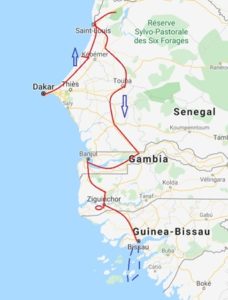
DAY 1: Dakar. the capital – SN
Arrival in Dakar and transfer to the hotel.
DAY 2: Dakar contemporary metropolis & Gorée. From Dakar to Gorée (transfers in town and ferry)
Dakar is located at the end of the Cape Verde peninsula, the western-most point on the African continent and has a population of about 2.4 million people.
Nowdays a large and vibrant African metropolis it was the cultural and intellectual capital of the former French West Africa.
Also the Senegal’s capital, is currently a window on contemporary art and music and the center of all kinds of creativity.
We will visit the Musée des Civilisations Noirs. Opened in December 2018, it is the realization of Léopold Sédar Senghor’s vision (the first president of independent Senegal, a poet, and Nobel Prize winner). The museum represents the historical and contemporary worldwide cultures, art, and soul of Black people, which he called Negritude.
We will also visit the Cathédrale Notre Dame. The project to build the Dakar cathedral was initiated in 1910 to pay tribute to African combatants; the Cathedral was finally built in Neo-Sudanese style, a style inspired by the Sahara and Sub-Sahara adobe mosque architecture, consecrated on 2 February 1936.
Arrival at Dakar port to board a ferry and spend a night in Gorée, the island where slaves used to be crammed before being shipped to the Americas. Some restored buildings remain to bear witness of those times.
The Portuguese were the first to establish a presence on Gorée in 1450 where they built a small stone chapel. After the decline of the slave trade from Senegal in the 1770s and 1780s, the island became an important port for the shipment of peanuts, Arabic gum, ivory, and other products of legitimate trade. Thanks to the nice breeze, and the many restaurants and shops, Gorée today has become a pleasant and trendy location. In the late afternoon and evening, when the tourists are gone, we will experience the real feeling of this special island.
DAY 3: Lac Rose and fisherman villages. From Gorée to Lac Retba (ferry and drive 30 km – driving time 1 hour)
Waking up in Gorée before the crowd arrives is a pleasure, as strolling in the tiny stone-paved alleys of this historical settlement.
Ferry to Dakar and drive to Lac Retba, a shallow saltwater lake surrounded by dunes, also known as Lac Rose.
Miles of exciting drive on the beach by 4×4 (depending on tides) will bring us to discover the largest fishing villages in Senegal. More than 4500 wooden painted pirogues come to the shore with the catch of the day… On the beach the fishermen sell to the local market women, after we meet the artisans carving the large pirogues, the painters decorating them with bright colors.
DAY 4: Saint Louis. From Lac Retba to St. Louis (210 km – driving time 4 hrs.)
Saint Louis, known to locals as Ndar, is a charming ancient town that was a French territory from 1673 until 1895 and the capital of all French West Africa colonies from 1895 until 1902 when the capital was moved to Dakar. From 1920 to 1957, it also served as the capital of the neighboring colony of Mauritania.
It has been the former base of the “Aeropostale” airmail pioneer operation between Europe, Africa, and South America. Saint Exupéry, the famous writer, and author of “The Little Prince”, was one of Aeropostale’s pilots following this route.
Located on two islands between the Senegal River and the ocean at the southern edge of the Sahara, rich in three centuries of history, cultural background, geography, and architecture, Saint-Louis is a “bridge” between the savanna and the desert, the ocean, the river, and the inland, between tradition and modernity, Islam and Christianity, Europe and Africa.
Home to a society with a distinctive lifestyle, Saint-Louis has retained its unique identity. “No one comes without falling in love with the city,” proudly say its people who consider Saint-Louis as the birthplace of Senegalese Teranga, the Wolof word for hospitability
The best way to visit the narrow lanes of Saint Louis is by calash, just as locals do, and walk in the fisherman’s quarters. Time to stroll in the tiny avenues and enjoy the unique atmosphere of this old town.
We will spend the night at the historic hotel of the town – built in 1895 and now fully renovated – it was here that all Aeropostale pilots use to stay.
DAY 5: Bird sanctuary & Nomadic tribes. From St. Louis to Ferlo desert (150 km – driving time 4 hrs.)
Early morning departure northwards to discover Djoudj National Bird Sanctuary (Parc National des Oiseaux du Djoudj), a natural oasis formed by hundreds of miles of partially flooded lands that has been declared a UNESCO World Heritage Site.
This “humid paradise” between the Sahara and Ferlo desert, is the best habitat and nesting site for over a million migratory and resident birds – lies on the southeastern bank of the Senegal River and offers a range of wetland habitats that are attended by many migrating birds, some getting here after crossing the Sahara. Out of more than 400 species, pelicans and flamingos are the most common, whereas aquatic warblers are a bit less conspicuous – migrating here from Europe, this park is their single most important wintering site yet discovered. Apart from birds, there is also a wide range of wildlife such as warthogs and crocodiles. Motorboat excursion led by a local ornithologist- guide.
Depending on the season, considering the time of migrations and level of water, the visit to Djoudj may be replaced by a similar experience in Langue de Barbarie, a thin, sandy peninsula, adjacent to the Atlantic Ocean, located in western Senegal, in the neighborhoods of the city of Saint-Louis. The peninsula separates the ocean from the final section of the Senegal River. The Langue de Barbarie National Park is home to an abundant variety of bird species and three species of turtle.
In the afternoon, continue to the Ferlo Desert to discover the arid region which nomadic Fulani tribe herd large droves of zebu. The Fulani (also called Peul) are the largest nomadic tribe roaming West African Savannahs, living in a vast area from Senegal to Chad. Their origins are still covered with mystery. They all share a common aristocratic cult for beauty and elegance. In the afternoon a local guide will join us for a visit to the neighboring villages and shelters. When the herds come back, we might even be invited to witness the milking process.
DAY 6: Tuba Brotherhood. From Ferlo desert to Kaolack (240 km – driving time 5 hrs.)
Touba inhabitants follow Muridism and the town itself is a sort of theocratic “state within the state”, ruled by a Caliph. The founder of Mouridi brotherhood was a Sufi named Amhadou Bàmba Mbake.
Amhadou Bàmba founded Touba in 1887. The holy site remained a tiny, isolated place in the wilderness until his death and burial at the site of the Great Mosque, 40 years later. The Great Mosque was finally completed in 1963 and since its inauguration, the city has grown at a rapid pace: from under 5,000 inhabitants in 1964, the population was officially estimated at 529,000 in 2007
The Mourides have a large social and economic impact in Senegal: thanks to their peaceful (and African) vision of Islam, Muridism, with other brotherhoods following the cult of Marabouts, has become the bastion that protects Senegal from radical Islam.
During the Grand Magal, the annual pilgrimage, the town is visited by four million pilgrims.
Mourides welcome any interest in their traditions. Yet since Tuba is a sacred town, all visitors should accept traditional rules. Therefore, we must apply a considerate dress code: not smoke, not drink alcohol and not listen to music during the visit. If we follow these rules, we will be welcomed. A Baye Fall, a member of a colorful branch of Muridism, will accompany us during the visit.
DAY 7: Stone circles. From Kabacoto to Banjul (240 km – driving time 6 hrs.) – SN-GA
Early departure, we will leave the main road to discover the unique megalithic site of Sine Ngayene, as part of the Senegambian stone circles, which lie in The Gambia and in central Senegal.
According to UNESCO, the Senegambian stone circles are “the largest concentration of stone circles seen anywhere in the world.” These sites represent an extraordinary concentration of more than 1,100 stones and related tumuli spread over a territory of 100 km wide and 350 km in length, on the north bank of the Gambia River.
After The Gambia border formalities, we will drive to the Banjul area.
DAY 8: Gambian birds and sacred masks. From Banjul to Ziguinchor (160 km – driving time 4 hrs.) – GA-SN.
Gambia is renowned as a bird-watching destination. With an ornithological guide, we will discover different species of African birds in their habitat.
Drive to the southern border whit Casamance region of Senegal.
We will leave the main track to join a remote village. We have lunch in the village, prepared by a local family to enjoy the Senegalese gastronomy and improve local community economy.
If we are lucky, in the afternoon masks leave the sacred forest to dance for an enthusiastic local crowd. Masks are part of the animistic Diola culture, people fear and respect masks, and consider them spirits who play an important role in solving conflicts between villagers.
Evening arrival to our comfortable hotel on the banks of Casamance River that will be our base for two days dedicated to discovering Casamance.
DAY 9: Sacred kings. Casamance (150 km approx. – driving-time 4 hrs.) –SN.
We will leave the main road to visit an adobe-fortified building still inhabited by a large patriarchal Diola family, an interesting example of traditional African sculptural architecture. These large clay and wooden fortified houses, where light comes from a central hole in the roof, are known as “impluvium houses” and had the function to protect their dwellers from outside attacks.
In a hidden village, we will be received by the king of a Diola Kingdom. After the protocol salutations the king, that is also the high priest holding both political and mystical power, will answer our questions on the traditional rules in Diola society.
Late afternoon, return to Ziguinchor.
DAY 10: On the edge. From Ziguinchor to Bissau (220 km – driving time 7 hrs.) – SN – GB
Early departure for a long but interesting day. Guinea Bissau border crossing.
The road will bring us south to a unique eco-system where Bolon (sea arms) penetrate the land for more than a hundred miles creating a large temporary flooding area. The borders between salt water, land and fresh water are uncertain and changes with the tides. 23% of Guinea Bissau territory is under the water during the high tide end emerges during the low tide… On the way to Bissau stop at Bula to meet a tradition king, called Regolo and learn about the culture of his tribe.
DAY 11: From the ghost capital to the Bijagos Archipelago. From Bissau to Rubane (speed boat) – GB
Aboard a speedboat, we start three days of sailing to discover the Bijagos Archipelago with its remote islands and isolated human settlements. The Bijagos Archipelago is located approximately 40 miles offshore and, with its 88 islands (of which only 21 are permanently inhabited), is the largest archipelago in Africa. With its wild and pristine landscapes, its genuine tribal culture, and its unique fauna, Bijagos is a “geographical jewel”.
Due to the remoteness of the destination, the lack of transportation, and the deep attachment to the local traditions, the Bijagos inhabitants have been little influenced by the external world: during ceremonies, women still wear the saiya – a traditional skirt made of straw – and the rhythm of life in villages is given by initiations and secret ceremonies – for example, young men have to go through a seven-year initiation rite during which they live in a “convent” without any contact with women.
Our first stop will be Bolama Island, the former capital of Portuguese Guinea from 1871 to 1941 before it was moved to Bissau. This transfer was needed due to the shortage of fresh water in Bolama.
When the Portuguese left, native people came to live in the town which is now falling apart and is partly invaded by tropical vegetation. It was originally built following the plans of a «Castrum Romanum» (Roman citadel) so today we can witness its large sunny lethargic avenues, its empty squares, its dry fountains, its bush-like gardens, and its large administrative buildings in neo-Palladian style. In the Governor’s Palace, we can still admire columns in the classic style … where now goats graze! The Bissau-Guinean government is aiming for it to be designated the nation’s first World Heritage Site.
Bolama, although inhabited, is plunged into the fairy-tale atmosphere of a still-inhabited ghost town.
Due to the tide, the visit of Bolama can be postposed to day 14.
Arrival at Rubane / Bubaque Islands in a comfortable hotel that will be our base for three days of discovering Bijagos Archipelago.
DAY 12: Special event (speed boat) – GB
Vaca Bruto mask ceremony. If the date of the tour is concomitant to the Vaca Bruta mask, special event: morning relax or walk to visit the inland of Rubane Island and its small village.
After lunch we visit the largest village in the archipelago, Bubaque, the only one connected to the continent by a ferry once a week: unpaved alleys, a tiny colorful market, local bars and traders, and the tiny ethnographic museum dedicated to Bijagos culture. After the visit, we will reach an isolated village to experience the Vaca Bruta initiation mask ceremonies with large participation from the villagers.
Turtle’s nesting. If the date of the tour is concomitant to the Turtle’s Nesting, a special event: visit of the largest village in the archipelago, Bubaque, the only one connected to the continent by a ferry once a week: unpaved alleys, a tiny colorful market, local bars, and traders and the tiny ethnographic museum dedicated to Bijagos culture, sail in the direction of the Southern Island, stop at Meio a pristine uninhabited island where our footprints on the sand will be the only human traces. Arrival at Poilao uninhabited island in the late evening, with high tide the turtles will emerge from the ocean, we must remain silent and don’t use a direct flashlight that can scare the turtles….
Late-night return at our comfortable hotel.
DAY 13: Islander life (speed boat) – GB
Day to enjoy the archipelago way of life: relax at the wild beach, a walk to explore villages and luxuriant vegetation, excursion to the neighboring Soga Island.
DAY 14: Bissau, from Rubane to Bissau (speed boat) – GB
Transfer back to Bissau.
Bissau, the tiny capital of the country.
We start walking by Bissau Vehlo, the old Portuguese quarter with an atmosphere reminding us of past Portuguese days and where we can experience the mix of African and Portuguese souls. In old wooden cafés, we can taste Portuguese wines and watch Portuguese news.
We continue to the Presidential Palace, the Catholic Cathedral, Fortaleza Amura, Independence Monument, and Che Guevara Square to end in an open-air bar known for the best mojito in town…
In the evening, transfer to the airport for the flight out.
VISAS & BORDR CROSSINGS:
Senegal
Depending on the travellers’ nationality entry into Senegal:
– does not require a visa, for US and EU and some other nationalities.
– or requires a double entry visa to be obtained upon arrival at the airport,
– or requires double entry visa to be obtained prior to departure.
We suggest to contact us to check which at are conditions of entry into Senegal for your nationality.
In case visa is required, multiple-entry visa is needed.
Gambia: please – check; for most nationalities not needed or available at the border. Concerning Gambia border crossing: if you are traveling with medicines, they must be accompanied by a medical prescription, preferably in English.
Guinea Bissau – single entry visa is required and obtainable during the tour (please advise if we have to arrange for it).
VACCINATIONS: Yellow fever – compulsory; malaria prophylaxis – highly recommended; cholera not necessary at the moment but to be checked upon departure.
MEALS: lunch – restaurants (pre-selected menus) or cold picnic; dinner – at the hotel restaurant (pre-selected menus).
LUGGAGE: Please contain the weight in 20 kg (45 lb.) water-proof duffle bags are suggested, when on the speedboat, passengers may get splashed by water or foam, we advise protecting any camera equipment. We suggest bringing mosquito repellent.
TRAVEL INSURANCE: Not included. Mandatory for medical assistance, repatriation, material, and physical damages. We are not responsible for any material or physical damage during the tour
TRANSPORT: On roads and tracks by Minibus or 4×4, speedboat fitted for ocean-crossing to the Bijagos Archipelago.
TIDES and WEATHER: With each departure, visits could be rescheduled as per the tides; all will be visited but maybe in a different order. Bad weather conditions can oblige to change, cancel, reschedule, or delay the itinerary, the organizer cannot behold as responsible for any change or delay.
ACCOMMODATIONS: Hotels and lodges are always chosen with maximum care, however, due to a possible lack of availability in some hotels, the Tour Leader may have to replace some hotels during the tour itself with others of similar standard. In some hotels, single rooms are not always granted.
- All our trips are designed to be flexible so that we can adapt to external conditions and take advantage of opportunities that arise once there.
- Considering the special nature of the journey, some parts of the program may be modified due to unpredictable factors and are based on unarguable decisions of our Tour Leader. Costs originating from such variations will be the sole responsibility of the participants. Of course, the Leader will do his/her utmost to adhere to the original program.
- Prices could change in case of major changes in service costs, beyond the organizer’s will.




